December 20, 2018

Shared Data from the Global Enteric Multicenter Study Will Help Future Research in Diarrheal Diseases
Data collected from the Global Enteric Multicenter Study (GEMS), a multi-site research project studying diarrheal diseases that was designed and coordinated by researchers in the Center for Vaccine Development and Global Health (CVD) at the University of Maryland School of Medicine (UMSOM), are now available to scientists on two online data resources.
Access to this important data will help scientists around the world in their research into treatments and interventions for diarrheal diseases, a leading cause of death among the most vulnerable populations.
The GEMS study was the largest, most comprehensive study of childhood diarrheal diseases ever conducted in developing country settings. It was coordinated by CVD, and the keystone component was a case-control study conducted at seven diverse, high-burden sites in sub-Saharan Africa (The Gambia, Kenya, Mali and Mozambique) and South Asia (Bangladesh, India and Pakistan).
The study enrolled 22,568 children under five years of age, a sample size large enough to provide comprehensive data on the causes, incidence, and impact of the range of diarrheal diseases affecting children around the world.
“At the time that the GEMS project was initiated, diarrheal diseases constituted the second leading cause of death among children under five years in developing countries. Although there were known effective treatments such as oral rehydration solutions (ORS) and intravenous fluids and zinc supplements, many young children in rural areas and urban slums did not have easy access to health care to receive such treatments,” said Myron M. Levine, MD, DTPH, Principal Investigator for GEMS, the Simon and Bessie Grollman Distinguished Professor of Medicine and Associate Dean for Global Health, Vaccinology and Infectious Diseases. “Moreover, when the GEMS study began there were no vaccines against specific causes of childhood diarrhea in routine use in sub-Saharan Africa or South Asia to prevent such diarrheal infections. Nor was there broad agreement on what were the major pathogens responsible for the more severe forms of young child diarrheal illness in Africa and South Asia.”
Whereas many different bacteria, viruses and other pathogens were recognized as agents that can cause diarrheal disease prior to GEMS, there was not agreement on their relative importance in children in developing countries or whether their incidence varied in infants (0-11 months of age), toddlers (12-23 months of age) and pre-school children (24-59 months of age). In addition, there was no robust data on whether there were marked difference in the array of pathogens from country-to-country and from year-to-year within the same country.
Dr. Levine added “GEMS not only quantified the overall burden of moderate-to-severe diarrhea in children under five years of age in the two global regions where 80 percent of diarrheal disease deaths were occurring. It also revealed that a small number of specific pathogens accounted for a notable proportion of all moderate-to-severe diarrhea. These results paved the way for accelerated development of vaccines against some pathogens (for example, Shigella) and for the implementation of some existing vaccines (for example, rotavirus vaccines).”
Information was particularly lacking from sub-Saharan Africa, which includes most of the world’s countries with the highest young child mortality rates. Researchers in the GEMS study systematically collected these data and filled the knowledge void, thereby allowing the rational setting of priorities for research and for implementing interventions in specific populations. The availability of GEMS data provides unique data to help researchers, policymakers, donors, and advocates to make evidence-based decisions to reduce the global burden of diarrheal diseases.
“This important data will help scientists around the world in their research to combat diseases that affect children under five in low resource settings,” said UMSOM Dean E. Albert Reece, MD, PhD, MBA, who is also the Executive Vice President for Medical Affairs, University of Maryland, and the John Z. and Akiko K. Bowers Distinguished Professor. “It will also help set the stage for evidence-based policy decisions to help reduce the global burden of diarrheal diseases.”
About the Data Site
ClinEpiDB.org launched earlier this year through a global collaboration of University of Pennsylvania’s School of Arts and Sciences, Perelman School of Medicine, University of Georgia’s Institute of Bioinformatics, and the University of Liverpool. It allows users to browse GEMS data through an intuitive, point-and-click open access resource, while maintaining the rigorous privacy protection through a protected user registration system. Available data include critical study documentation, advanced quantitative molecular TaqManTM Array Card diagnostics and conventional microbiologic test results from more than 25,000 participants. In February, data from affiliated CVD projects, the Healthcare Utilization and Attitudes Survey and GEMS1A will become available on www.ClinEpiDB.org.
GEMS microbiome data from over 1,000 stool samples is also available at www.MicrobiomeDB.org. MicrobiomeDB development is led by the University of Pennsylvania's School of Veterinary Medicine. This web-based discovery tool empowers scientists to search through large and complex microbiome datasets, while providing sophisticated tools for data visualization and analysis.
“Public accessibility of microbiome data from GEMS, combined with the ability to integrate these data with other microbiome studies, helps us gain new insight into the ways in which intestinal microbes impact the overall health and well-being of children,” said Daniel Beiting, PhD, who is an Assistant Professor of Pathobiology at the University of Pennsylvania’s School of Veterinary Medicine.
About the University of Maryland School of Medicine
Now in its third century, the University of Maryland School of Medicine was chartered in 1807 as the first public medical school in the United States. It continues today as one of the fastest growing, top-tier biomedical research enterprises in the world -- with 43 academic departments, centers, institutes, and programs; and a faculty of more than 3,000 physicians, scientists, and allied health professionals, including members of the National Academy of Medicine and the National Academy of Sciences, and a distinguished recipient of the Albert E. Lasker Award in Medical Research. With an operating budget of more than $1 billion, the School of Medicine works closely in partnership with the University of Maryland Medical Center and Medical System to provide research-intensive, academic and clinically-based care for more than 1.2 million patients each year. The School has over 2,500 students, residents, and fellows, and more than $530 million in extramural funding, with most of its academic departments highly ranked among all medical schools in the nation in research funding. As one of the seven professional schools that make up the University of Maryland, Baltimore campus, the School of Medicine has a total workforce of nearly 7,000 individuals. The combined School and Medical System (“University of Maryland Medicine”) has an annual budget of nearly $6 billion and an economic impact more than $15 billion on the state and local community. The School of Medicine faculty, which ranks as the 8th highest among public medical schools in research productivity, is an innovator in translational medicine, with 600 active patents and 24 start-up companies. The School works locally, nationally, and globally, with research and treatment facilities in 36 countries around the world. Visit medschool.umaryland.edu/
About the UMSOM Center for Vaccine Development and Global Health
For over 40 years, researchers in the Center for Vaccine Development and Global Health have worked domestically and internationally to develop, test, and deploy vaccines to aid the world’s underserved populations. CVD is an academic enterprise engaged in the full range of infectious disease intervention from basic laboratory research through vaccine development, pre-clinical and clinical evaluation, large-scale pre-licensure field studies, and post-licensure assessments. CVD has worked to eliminate vaccine-preventable diseases. CVD has created and tested vaccines against cholera, typhoid fever, paratyphoid fever, non-typhoidal salmonella disease, shigellosis (bacillary dysentery), Escherichia coli diarrhea, nosocomial pathogens, tularemia, influenza, and other infectious diseases. CVD’s research covers the broader goal of improving global health by conducting innovative, leading research in Baltimore and around the world. CVD researchers are developing new and improved ways to diagnose, prevent, treat, control, and eradicate diseases of global impact. Currently, these diseases include malaria, typhoid, shigella and vaccine-preventable infectious diseases. CVD researchers have been involved in critical vaccine development for emerging pathogens such as Zika and Ebola. In addition, CVD’s work focuses on the ever-growing challenge of anti-microbial resistance.
Contact
Office of Public Affairs
655 West Baltimore Street
Bressler Research Building 14-002
Baltimore, Maryland 21201-1559
Contact Media Relations
(410) 706-5260
Related stories

Tuesday, May 21, 2024
University of Maryland School of Medicine Launches Vaccine Development Program to Prevent Sepsis in Newborns
University of Maryland School of Medicine (UMSOM) researchers at the Center for Vaccine Development and Global Health (CVD) have been awarded up to $3.96 million over three years to develop and test a vaccine in an animal model that could eventually be used in pregnant women to prevent sepsis in newborns and infants.
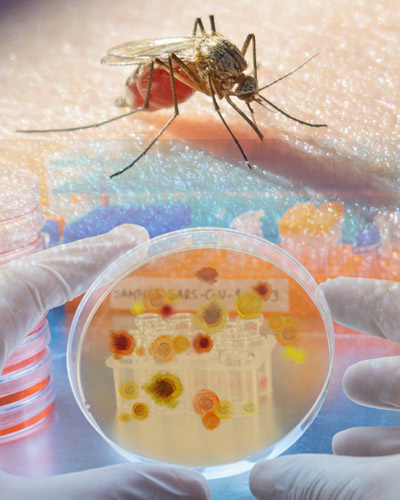
Monday, July 18, 2022
New Genomic Research Shows Why Testing Malaria Vaccines in the Clinic is as Rigorous as Natural Exposure in the Field
Malaria is the deadliest mosquito-borne parasitic infection of humans. In 2021, after a century of research, the World Health Organization (WHO) approved the world’s first malaria vaccine. That vaccine reduces the incidence of malaria infections in young children aged 5-17 months by only 30 percent, meaning that it remains critical to continue developing and testing more effective vaccines.
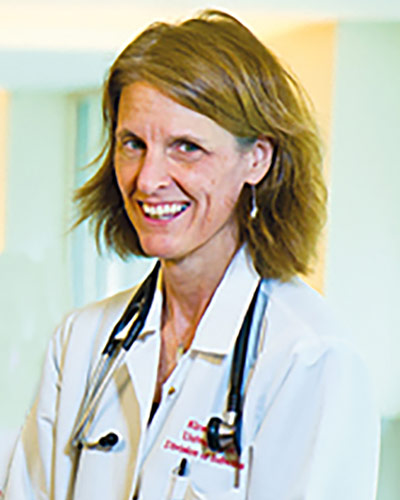
Wednesday, January 26, 2022
Trial Co-led by University of Maryland School of Medicine Scientist Confirms Safety of “Mix-and-Match” COVID-19 Vaccine Booster Dosing
A University of Maryland School of Medicine (UMSOM), Center for Vaccine Development and Global Health (CVD), expert is co-leading an ongoing study that was pivotal in recommending adults and teens receive booster COVID-19 shots of their choosing starting in fall 2021. The preliminary clinical trial results, reported today in The New England Journal of Medicine, found that is safe and effective to receive boosters that are the same or a different one from the person’s primary vaccine(s).

Thursday, January 09, 2020
UM School of Medicine Research Shows Less Severe Cases of Diarrheal Illness can Still Lead to Child Deaths, Even Weeks Following Onset of the Illness
Diarrheal diseases are a leading cause of death for young children, accounting for nine percent of all deaths worldwide in children under five years of age, with most occurring in children under two years of age. Now, researchers at the University of Maryland School of Medicine (UMSOM) found that even milder cases of diarrheal diseases can lead to death in young children.

Wednesday, October 30, 2019
UM School of Medicine's Myron M. Levine, MD, DTPH, to Receive Prestigious Lifetime Award for Five Decades of Pioneering Vaccine Research
Myron M. Levine, MD, DTPH, the Simon and Bessie Grollman Distinguished Professor at the University of Maryland School of Medicine (UMSOM), Associate Dean for Global Health, Vaccinology and Infectious Diseases, and Founder and Former Director of the Center for Vaccine Development and Global Health (CVD) is a co-recipient of the 2020 Research! America Geoffrey Beene Foundation Builders of Science Award for his pioneering vaccine and infectious disease research.

Monday, October 21, 2019
UM School of Medicine's Kathleen M Neuzil Elected as Member of Prestigious National Academy of Medicine
Kathleen M. Neuzil, MD, MPH, Professor of Medicine and Pediatrics and Director of the Center for Vaccine Development and Global Health (CVD) at the University of Maryland School of Medicine (UMSOM), has been elected as a member of the National Academy of Medicine (NAM), in recognition of her pivotal research that has informed and shaped global vaccine and public health policy. Her membership was announced at the annual NAM meeting in Washington, D.C., placing her among the 2,178 U.S. members of this important organization. Membership in the Academy is considered one of the highest honors for individuals who have made major contributions to the advancement of the medical sciences, health care and public health.
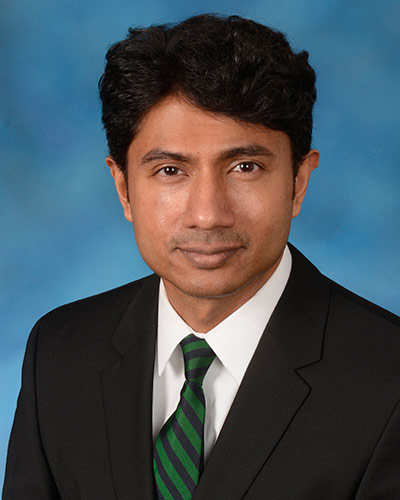
Monday, August 19, 2019
UM School of Medicine Researcher Warns of Need for Malaria Drug to Treat Severe Cases in U.S.
Each year there are more than 200 million cases of malaria worldwide, a mosquito-borne disease caused by a parasite that brings on fever and body aches and, in some cases, more serious conditions such as coma and death. While the vast majority of these cases occur in sub-Saharan Africa and South Asia, the U.S. each year sees more than 1,500 cases, and currently there is limited access to an intravenously-administered (IV) drug needed for the more serious cases, according to a top malaria researcher at the University of Maryland School Medicine (UMSOM).
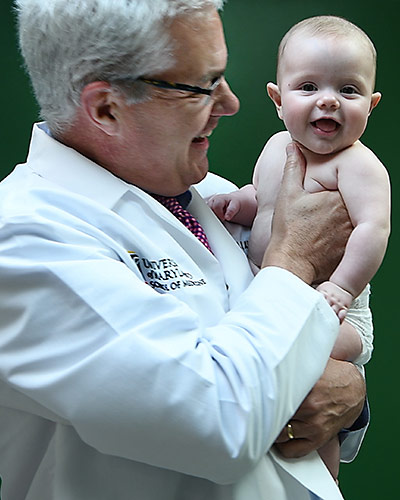
Wednesday, July 17, 2019
Vaccines Tested in UM School of Medicine’s Center for Vaccine Development Protect Children Around the World
For 30 years, the Center for Vaccine Development and Global Health (CVD) at the University of Maryland School of Medicine (UMSOM) has collaborated with the Pediatric Center of Frederick to test vaccines used in pediatric care.

Friday, March 08, 2019
UMSOM Researchers Unveil Progress and Challenges in Introducing Typhoid Conjugate Vaccine in Sub-Saharan Africa and Asia
Each year there are nearly 11 million cases of typhoid, a disease that is spread through contaminated food, drink and water. Researchers at the University of Maryland School of Medicine are leading an international consortium that is studying the impact of a typhoid conjugate vaccine (TCV) in an effort to accelerate introduction of the vaccine in countries in sub-Saharan Africa and Asia where there is a high burden of typhoid.
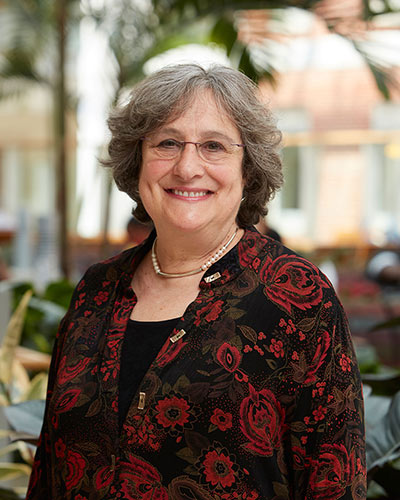
Wednesday, December 26, 2018
Multicenter Trial Supports Use of Topical Antibiotic as a Tool to Eliminate Staph Colonization in NICU Babies
A team of doctors led by Karen L. Kotloff, M.D., University of Maryland School of Medicine (UMSOM), Center for Vaccine Development and Global Health (CVD), has performed a clinical trial involving multiple hospitals that tested the effectiveness of applying a topical antibiotic known as mupirocin for prevention of Staphylococcus aureus (SA) infection in babies in the neonatal intensive care unit (NICU). This study was published in the journal Pediatrics.
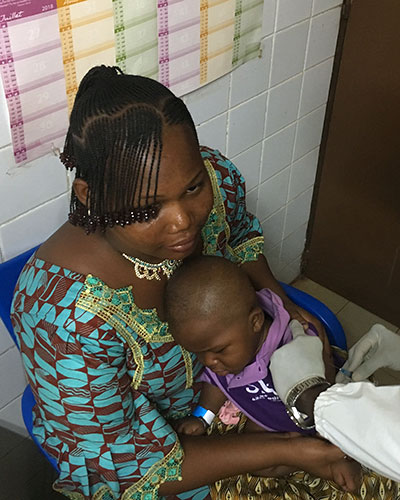
Monday, December 03, 2018
UMSOM and Groupe De Recherche Action En Sante Begin Second Typhoid Conjugate Vaccine Study in Africa
A new study has been launched in Burkina Faso for Bharat Biotech’s typhoid conjugate vaccine (TCV). It is the second clinical study underway in Africa for the vaccine and the first in West Africa. The vaccine study is a joint effort by the Center for Vaccine Development and Global Health (CVD) at the University of Maryland School of Medicine, (UMSOM) and Groupe de Recherche Action en Santé (GRAS) in Burkina Faso.
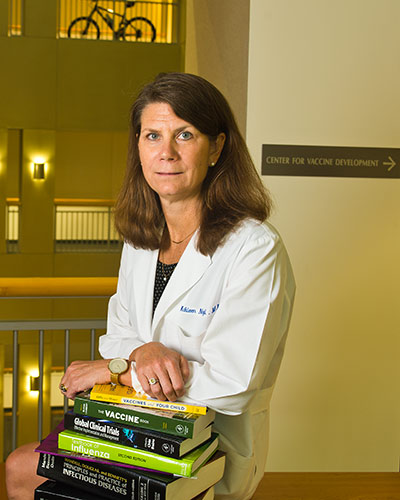
Friday, November 02, 2018
UMSOM Global Health Expert Named to Prestigious World Health Organization Immunization Panel
Kathleen Neuzil, MD, MPH, Professor of Medicine and Pediatrics and Director of the Center for Vaccine Development and Global Health (CVD) at the University of Maryland School of Medicine (UMSOM), has been named to the World Health Organization’s (WHO) Strategic Advisory Group of Experts (SAGE) on Immunization.

Sunday, October 28, 2018
American Society of Tropical Medicine & Hygiene Awards Dr. Miriam Laufer the LePrince Medal for Malaria Research
Miriam Laufer, MD, MPH, Professor of Pediatrics and Associate Director for Malaria Research at the University of Maryland School of Medicine’s (UMSOM) Center for Vaccine Development and Global Health (CVD), was awarded the Joseph Augustin LePrince Medal by the American Society of Tropical Medicine and Hygiene (ASTMH).

Thursday, June 08, 2017
University of Maryland School of Medicine Vaccine Researcher Receives Top Award in the Study of Infectious Diseases from National Foundation
Myron M. Levine, MD, DTPH, the Simon and Bessie Grollman Distinguished Professor and Associate Dean for Global Health, Vaccinology and Infectious Disease at UM SOM, has been awarded the Maxwell Finland Award for Scientific Achievement by the National Foundation for Infectious Diseases (NFID).

Monday, May 15, 2017
UM SOM Vaccine Researcher Receives Top Award in the Study of Infectious Diseases
Myron M. Levine, MD, DTPH, the Simon and Bessie Grollman Distinguished Professor and Associate Dean for Global Health, Vaccinology and Infectious Disease at UM SOM, has been awarded the Maxwell Finland Award for Scientific Achievement by the National Foundation for Infectious Diseases (NFID). The award honors his extensive accomplishments in public health; over his career, he has identified solutions to major sources of disease in the developing world, including cholera, typhoid, and Shigella dysentery. The award will be presented on Thursday, May 18, 2017 at the Hyatt Regency Bethesda in Bethesda, Md.

Friday, December 23, 2016
Trial Results Confirm Ebola Vaccine Provides High Protection Against Disease
An experimental Ebola vaccine was highly protective against the deadly virus in a major trial in Guinea, according to a new study that included researchers from the University of Maryland School of Medicine (UM SOM).
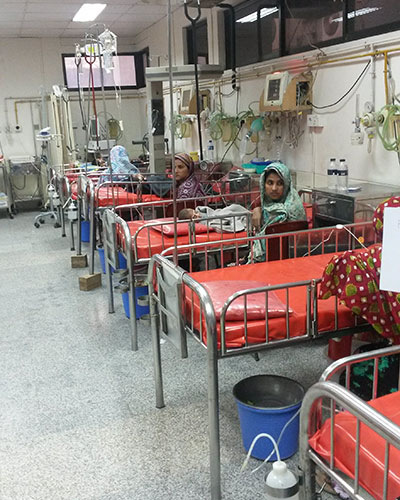
Friday, June 10, 2016
FDA Approves Vaccine for Cholera Invented and Developed at University of Maryland School of Medicine
In a milestone that was years in the making, a vaccine to prevent cholera, invented and developed by researchers at the University of Maryland School of Medicine’s Center for Vaccine Development, was approved today by the U.S. Food and Drug Administration (FDA).
